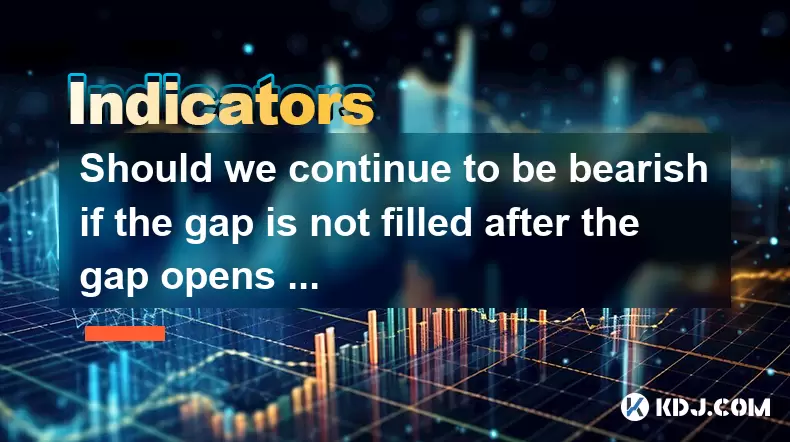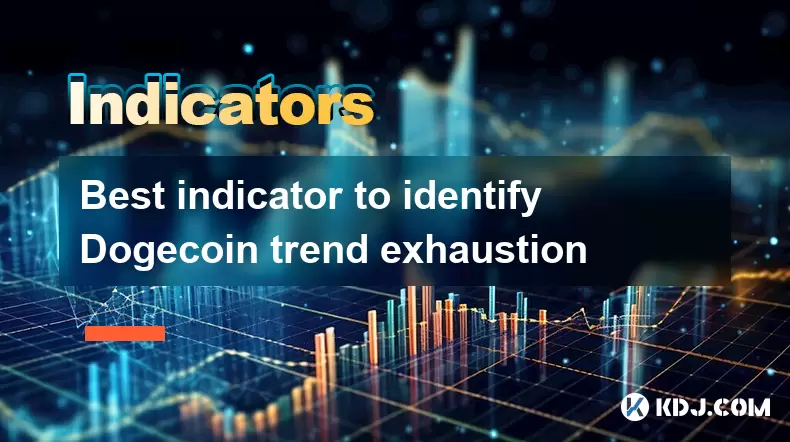-
 Bitcoin
Bitcoin $108,562.4295
0.46% -
 Ethereum
Ethereum $2,533.9553
1.52% -
 Tether USDt
Tether USDt $1.0002
-0.01% -
 XRP
XRP $2.2542
2.23% -
 BNB
BNB $662.4567
1.48% -
 Solana
Solana $151.4114
3.48% -
 USDC
USDC $0.9999
0.00% -
 TRON
TRON $0.2860
0.91% -
 Dogecoin
Dogecoin $0.1685
3.72% -
 Cardano
Cardano $0.5809
1.63% -
 Hyperliquid
Hyperliquid $39.2916
1.85% -
 Sui
Sui $2.8874
0.85% -
 Bitcoin Cash
Bitcoin Cash $496.5801
2.72% -
 Chainlink
Chainlink $13.3582
2.48% -
 UNUS SED LEO
UNUS SED LEO $9.0279
0.07% -
 Avalanche
Avalanche $18.0773
2.30% -
 Stellar
Stellar $0.2426
3.05% -
 Toncoin
Toncoin $2.9086
6.01% -
 Shiba Inu
Shiba Inu $0.0...01170
2.97% -
 Hedera
Hedera $0.1587
3.47% -
 Litecoin
Litecoin $87.4596
1.13% -
 Monero
Monero $317.0425
0.73% -
 Polkadot
Polkadot $3.3778
1.90% -
 Dai
Dai $0.9999
-0.01% -
 Ethena USDe
Ethena USDe $1.0001
-0.01% -
 Bitget Token
Bitget Token $4.4095
0.63% -
 Uniswap
Uniswap $7.3593
6.80% -
 Pepe
Pepe $0.0...09910
3.64% -
 Aave
Aave $274.7388
2.68% -
 Pi
Pi $0.4607
0.48%
Should we continue to be bearish if the gap is not filled after the gap opens at a low level?
A gap in crypto trading occurs when an asset's price jumps without trading in between, often due to news or market shifts, and traders watch if it fills to gauge future movement.
Jul 07, 2025 at 08:00 am

Understanding Gaps in Cryptocurrency Trading
In the context of cryptocurrency trading, a gap refers to a situation where the price of an asset jumps from one level to another without any trading occurring in between. This phenomenon is common due to the 24/7 nature of crypto markets and can occur after major news events, regulatory changes, or sudden market sentiment shifts.
When a gap opens at a low level, it means that the price drops significantly below the previous closing level with no trades executed in that range. Traders often observe whether this gap gets filled — meaning the price returns to the level before the drop — as a potential signal for future movement.
Gaps are not unique to crypto but are more volatile and frequent compared to traditional markets.
Why Do Gaps Occur in Crypto Markets?
Cryptocurrency markets operate continuously, but large institutional trades, exchange-specific liquidity issues, or global events can cause abrupt price movements. These factors often result in gaps forming on candlestick charts.
- Market News: A negative development about a major blockchain project can trigger panic selling overnight.
- Exchange Downtime: If a major exchange goes offline during high volatility, prices may open significantly lower elsewhere.
- Large Whale Movements: When significant holders move large amounts of crypto, it can create artificial gaps due to slippage or rapid order execution.
Identifying the reason behind a gap helps traders assess its significance and likelihood of being filled.
Analyzing Whether the Gap Will Be Filled
Traders commonly believe that most gaps will eventually be filled, especially if they were caused by temporary imbalances rather than fundamental changes. However, this isn’t always true in crypto, where momentum can carry prices far beyond initial levels.
- Support and Resistance Levels: Check if the gap occurred near a key support zone. If so, there's a higher chance the price could return.
- Volume Analysis: High volume accompanying the gap suggests strong conviction, making it less likely to be filled soon.
- Timeframe Consideration: Short-term traders might see gaps filled within hours, while long-term investors may ignore them entirely.
The timeframe you're trading on determines how relevant a gap is to your strategy.
Should You Stay Bearish After a Low-Level Gap?
Deciding whether to maintain a bearish position after a gap down depends on several factors:
- Fundamental Impact: Was the gap triggered by a short-lived event or a structural problem in the network? A temporary fear-driven drop is different from a breach in security or adoption.
- Momentum Indicators: Use tools like RSI or MACD to determine if the asset is oversold or overbought after the drop.
- Order Book Depth: Examine the depth chart to see if buyers are stepping in at the new lower levels.
If the gap remains unfilled and the price continues to trade below it, maintaining a bearish stance might be justified. However, if buying pressure emerges near the gap level, it may indicate support and warrant reevaluation.
Bearish bias should be supported by technical indicators and volume data, not just the presence of a gap.
Practical Steps to Evaluate a Gap Before Taking Action
Here’s a step-by-step approach to evaluating a gap before deciding whether to stay bearish:
- Confirm the Gap Type: Identify whether it's a common gap (frequent and insignificant), breakaway gap (signals a trend change), or exhaustion gap (indicates end of trend).
- Check Volume During the Gap: High volume usually signals strong selling pressure; low volume may mean the gap lacks conviction.
- Look at Key Moving Averages: See if the price is above or below critical moving averages like the 50-day or 200-day SMA.
- Review Recent News: Determine whether the gap was driven by news or organic market action.
- Monitor Reversal Candles: Watch for bullish reversal patterns like hammers or engulfing candles near the gap area.
A systematic approach ensures emotional decisions don't override logical analysis.
Frequently Asked Questions
Q: Can gaps in crypto ever remain unfilled permanently?
Yes, especially if they are driven by irreversible events such as major hacks, protocol failures, or regulatory bans. Unlike traditional markets, crypto can experience permanent value erosion based on real-world developments.
Q: How do I differentiate between a healthy pullback and a gap-induced bearish pattern?
A healthy pullback typically sees gradual decline with moderate volume, while a gap-down shows abrupt movement. Also, pullbacks rarely leave price voids on the chart, whereas gaps do.
Q: Should I place stop-loss orders around gap areas?
It depends on your risk tolerance. If the gap represents strong resistance or support, placing stops just beyond these levels can help manage exposure effectively.
Q: Are all gaps equally important in crypto trading?
No, only gaps accompanied by significant volume or breaking key technical levels should be considered meaningful. Many small intra-day gaps are noise and can be ignored unless they align with broader trends.
Disclaimer:info@kdj.com
The information provided is not trading advice. kdj.com does not assume any responsibility for any investments made based on the information provided in this article. Cryptocurrencies are highly volatile and it is highly recommended that you invest with caution after thorough research!
If you believe that the content used on this website infringes your copyright, please contact us immediately (info@kdj.com) and we will delete it promptly.
- Elon Musk, Andrew Yang, and Polymarket: What's the Buzz?
- 2025-07-07 10:30:12
- Lightchain AI's Bonus Round: The Final Chance Before Mainnet & Ecosystem Tools
- 2025-07-07 10:30:12
- TON Foundation, UAE Golden Visa, and Toncoin Staking: A New Chapter in Crypto Residency?
- 2025-07-07 10:50:12
- Altcoin Prices, Institutional Investors, and the Ethereum Rotation: What's the Deal?
- 2025-07-07 10:50:12
- TON Coin, Golden Visa, and UAE Denial: What's the Real Deal?
- 2025-07-07 10:55:12
- PEPE's Bullish Trend: Riding the 50% Gain Wave?
- 2025-07-07 10:55:12
Related knowledge

How to trade Dogecoin based on funding rates and open interest
Jul 07,2025 at 02:49am
Understanding Funding Rates in Dogecoin TradingFunding rates are periodic payments made to either long or short traders depending on the prevailing market conditions. In perpetual futures contracts, these rates help align the price of the contract with the spot price of Dogecoin (DOGE). When funding rates are positive, it indicates that long positions p...

How to spot manipulation on the Dogecoin chart
Jul 06,2025 at 12:35pm
Understanding the Basics of Chart ManipulationChart manipulation in the cryptocurrency space, particularly with Dogecoin, refers to artificial price movements caused by coordinated trading activities rather than genuine market demand. These manipulations are often executed by large holders (commonly known as whales) or organized groups aiming to mislead...

Bitcoincoin market structure break explained
Jul 07,2025 at 02:51am
Understanding the Dogecoin Market StructureDogecoin, initially created as a meme-based cryptocurrency, has evolved into a significant player in the crypto market. Its market structure refers to how price action is organized over time, including support and resistance levels, trend lines, and patterns that help traders anticipate future movements. A mark...

What is the significance of a Dogecoin engulfing candle pattern
Jul 06,2025 at 06:36am
Understanding the Engulfing Candle Pattern in CryptocurrencyThe engulfing candle pattern is a significant technical analysis tool used by traders to identify potential trend reversals in financial markets, including cryptocurrencies like Dogecoin. This pattern typically consists of two candles: the first one is relatively small and indicates the current...

Best indicator to identify Dogecoin trend exhaustion
Jul 07,2025 at 11:29am
Understanding Dogecoin Trend ExhaustionIdentifying trend exhaustion in Dogecoin (DOGE) is crucial for traders aiming to avoid late entries or potential reversals. Trend exhaustion occurs when a prevailing price movement loses momentum, often leading to a consolidation phase or reversal. In the volatile world of cryptocurrencies like Dogecoin, understand...

Dogecoin monthly chart analysis for long term investors
Jul 06,2025 at 10:08am
Understanding the Dogecoin Monthly ChartFor long-term investors, analyzing the monthly chart of Dogecoin (DOGE) provides a macro view of its price behavior over extended periods. The monthly chart captures major trends, key resistance and support levels, and potential reversal zones that are crucial for strategic investment planning. Unlike daily or hou...

How to trade Dogecoin based on funding rates and open interest
Jul 07,2025 at 02:49am
Understanding Funding Rates in Dogecoin TradingFunding rates are periodic payments made to either long or short traders depending on the prevailing market conditions. In perpetual futures contracts, these rates help align the price of the contract with the spot price of Dogecoin (DOGE). When funding rates are positive, it indicates that long positions p...

How to spot manipulation on the Dogecoin chart
Jul 06,2025 at 12:35pm
Understanding the Basics of Chart ManipulationChart manipulation in the cryptocurrency space, particularly with Dogecoin, refers to artificial price movements caused by coordinated trading activities rather than genuine market demand. These manipulations are often executed by large holders (commonly known as whales) or organized groups aiming to mislead...

Bitcoincoin market structure break explained
Jul 07,2025 at 02:51am
Understanding the Dogecoin Market StructureDogecoin, initially created as a meme-based cryptocurrency, has evolved into a significant player in the crypto market. Its market structure refers to how price action is organized over time, including support and resistance levels, trend lines, and patterns that help traders anticipate future movements. A mark...

What is the significance of a Dogecoin engulfing candle pattern
Jul 06,2025 at 06:36am
Understanding the Engulfing Candle Pattern in CryptocurrencyThe engulfing candle pattern is a significant technical analysis tool used by traders to identify potential trend reversals in financial markets, including cryptocurrencies like Dogecoin. This pattern typically consists of two candles: the first one is relatively small and indicates the current...

Best indicator to identify Dogecoin trend exhaustion
Jul 07,2025 at 11:29am
Understanding Dogecoin Trend ExhaustionIdentifying trend exhaustion in Dogecoin (DOGE) is crucial for traders aiming to avoid late entries or potential reversals. Trend exhaustion occurs when a prevailing price movement loses momentum, often leading to a consolidation phase or reversal. In the volatile world of cryptocurrencies like Dogecoin, understand...

Dogecoin monthly chart analysis for long term investors
Jul 06,2025 at 10:08am
Understanding the Dogecoin Monthly ChartFor long-term investors, analyzing the monthly chart of Dogecoin (DOGE) provides a macro view of its price behavior over extended periods. The monthly chart captures major trends, key resistance and support levels, and potential reversal zones that are crucial for strategic investment planning. Unlike daily or hou...
See all articles

























































































